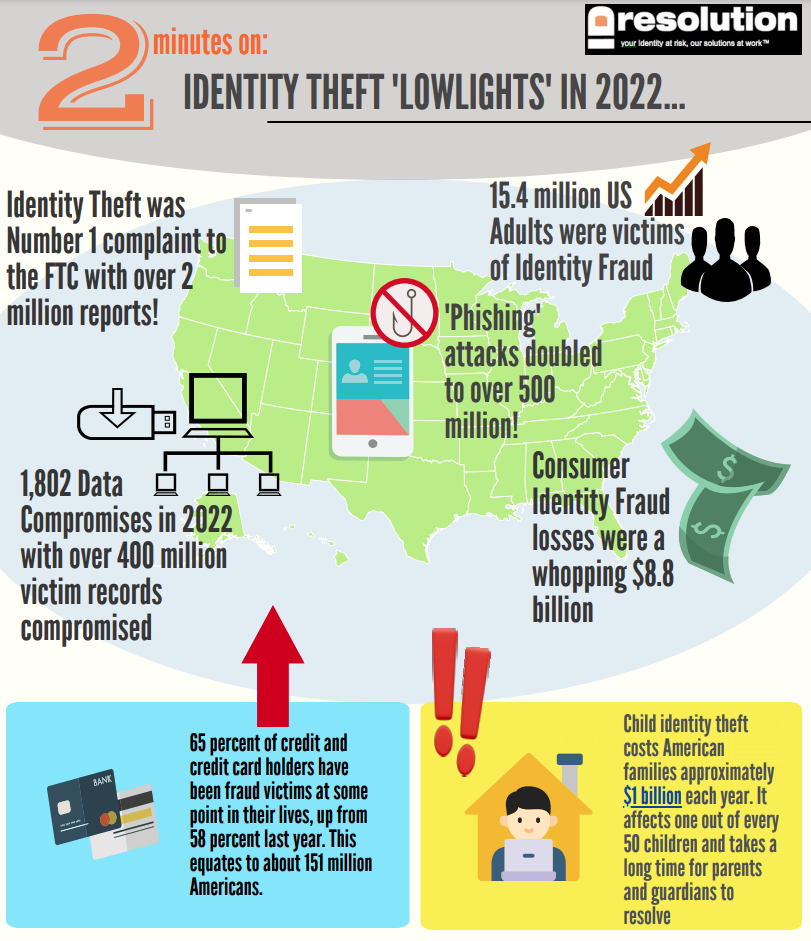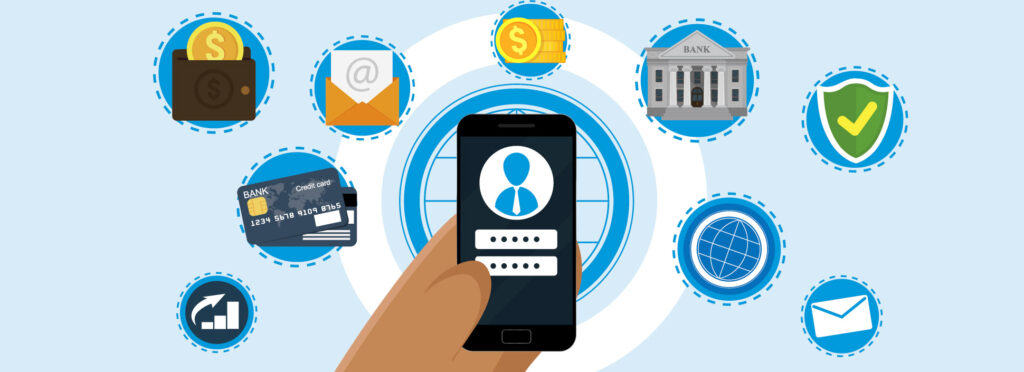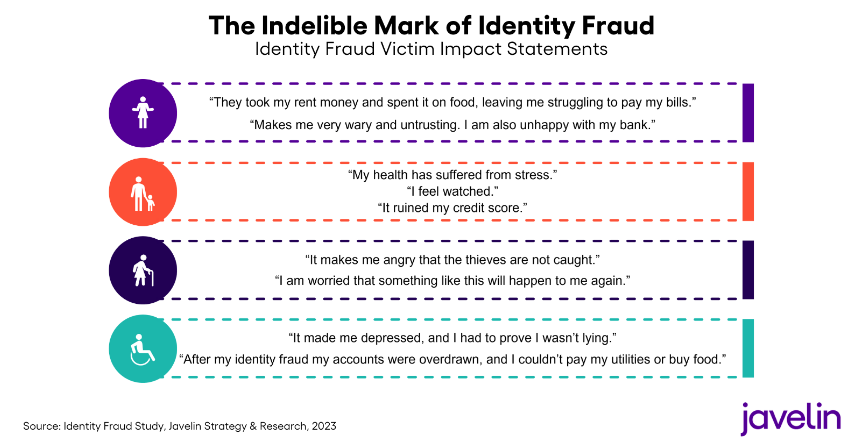
Identity Theft and Fraud are an ever-present in our lives. It’s not a matter of if, but when, we will become victims. We like to take an annual look at some of the trends and changes so let’s take a brief overview of the “Lowlights” for Identity Theft and Fraud in 2022…
Our review of the “lowlights” for Identity Theft and Identity Fraud in 2022 is meant to give “our” take on some of the more glaring statistics that have emerged. We regularly publish more detailed pieces on the individual types of threat we face so here we are just giving you an overview to provoke your thinking on how these affect you, your organization, your employees and your clients.
For a more in depth look at some of these topics you can click on the Useful Stuff tab in the menu.
So let’s get going…

- Identity Theft continues to be the number one complaint to the FTC with over 2 million reports filed
- 15.4 million US Adults were victims of Identity fraud
- Consumer Identity Fraud Losses were $8.8 billion
- Top types of Identity Fraud were: Credit Card Fraud, Bank Fraud, Tax Fraud, Personal/Business Loan Fraud, Medical Insurance and Services, General Insurance Fraud
- 800,000 Cyber crimes were reported to the FBI with losses around $10 billion. FL, TX and CA had the highest number of victims
- There were 1802 reported data compromises/breaches in 2022 with over 420 million victim records released.
- Phishing is the most common (and in our view most dangerous) cyber crime. Increased use of AI (artificial intelligence) are making these attacks more “personal” with increased use of social engineering.
- There are an estimated 3.4 billion spam emails sent every day
- Over 48% of all emails sent in 2022 were spam
- Increasing use of “Cash App’s” (Cash App, Zelle, Venmo) is creating increased fraud. Once cash is transferred to a fraudster, it’s usually gone forever!
- Child Identity theft affects one in every 50 children and can take a long time to resolve. It also costs about $1 billion a year!
Newer and Growing Threats…
Some of the newer and growing threats include:
- IoT – Internet of Things. As technology improves, more data and access points to our homes is gained with digital security cameras, baby monitors, digital door entry, washing machines, fridges etc etc. Whilst these are convenient, they allow access to our home networks where data can be hacked and credentials stolen not to mention invasion of privacy and physical security. We need to be mindful of how we set up and use these devices.
- Social Engineering Attacks and AI. Artificial intelligence is allowing for what seems much more “personal” interaction via automated emails, ad’s etc. This is allowing a vast potential to be unleashed in the phishing and vishing attacks by fraudsters. We need to be very careful about messages texts and emails that come from “friends”. Are they really who they say they are?
- Social Media. we still give out, often unnecessarily, lot’s of personal information in public domains. Social media platforms are a huge fishing ground for identity thieves and fraudsters.

Here’s a video to remind us of what a Phishing attack is…
If you think that Identity Theft is still a vague concept that has only minimal impact, take a look at some Victim Statements from a recent Javelin study…

